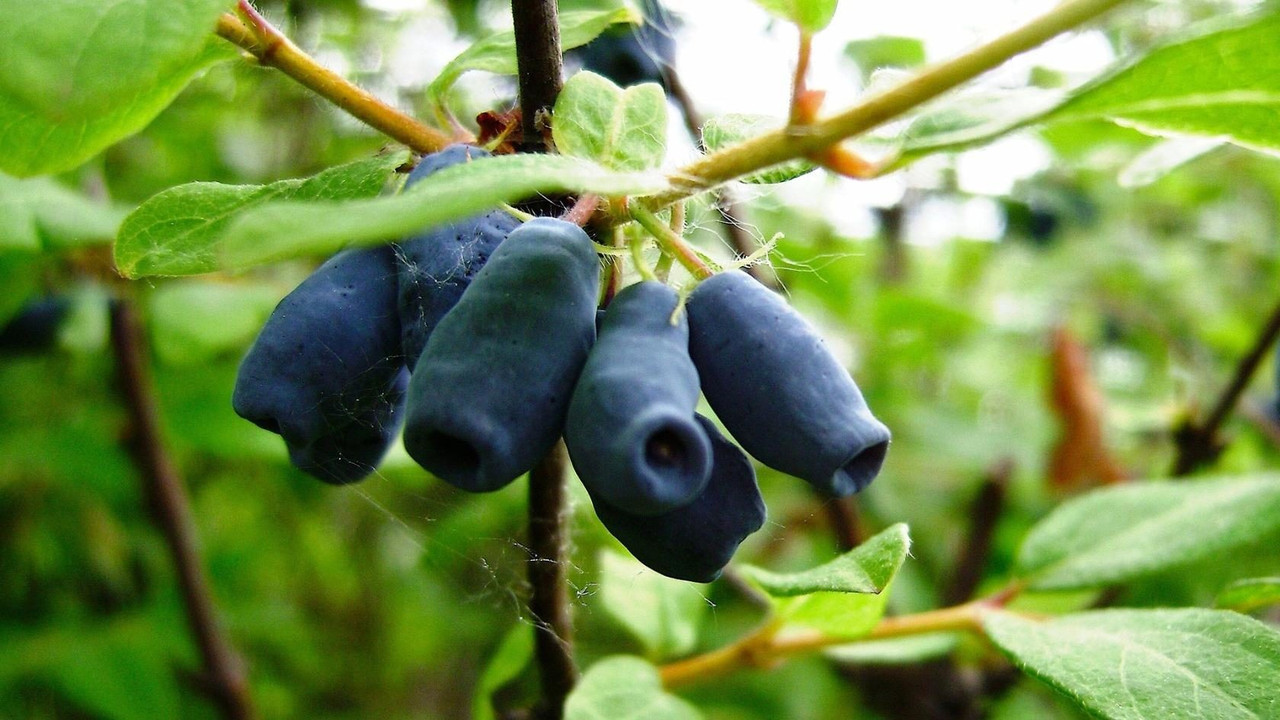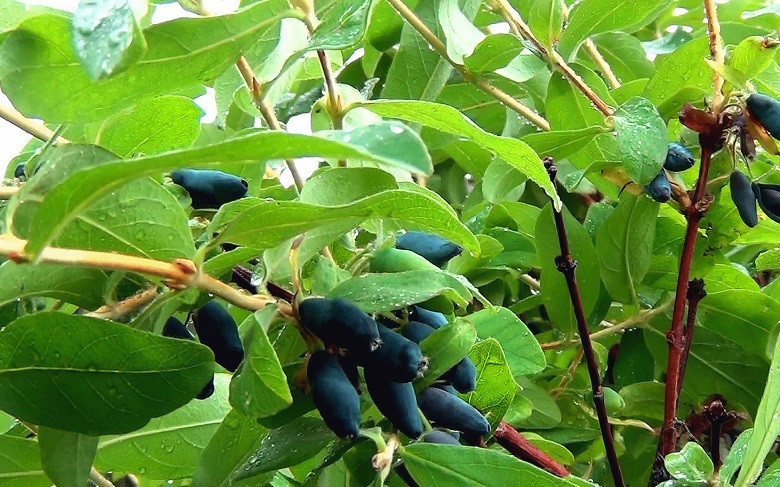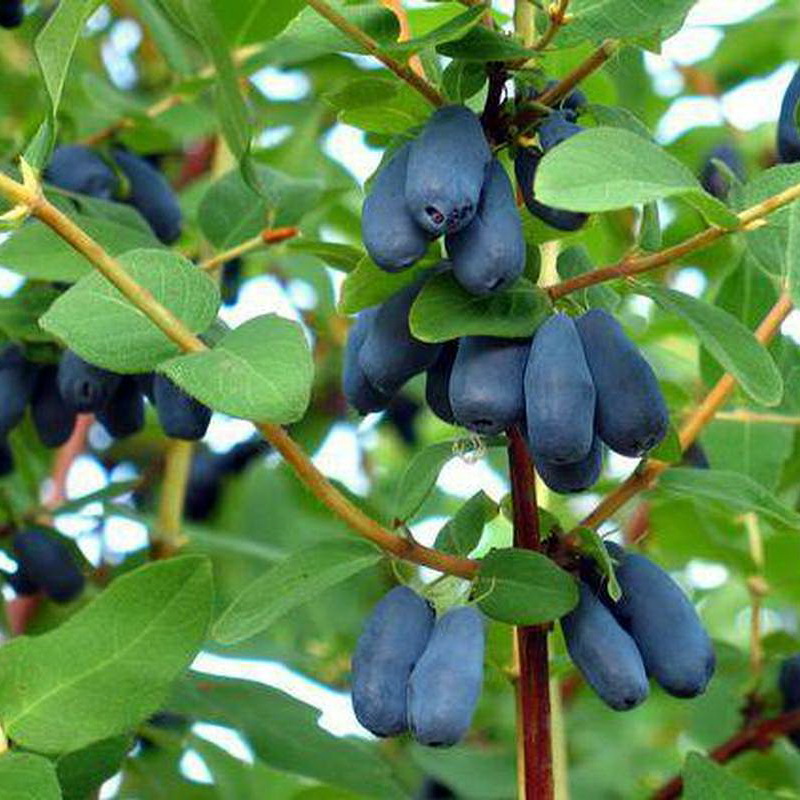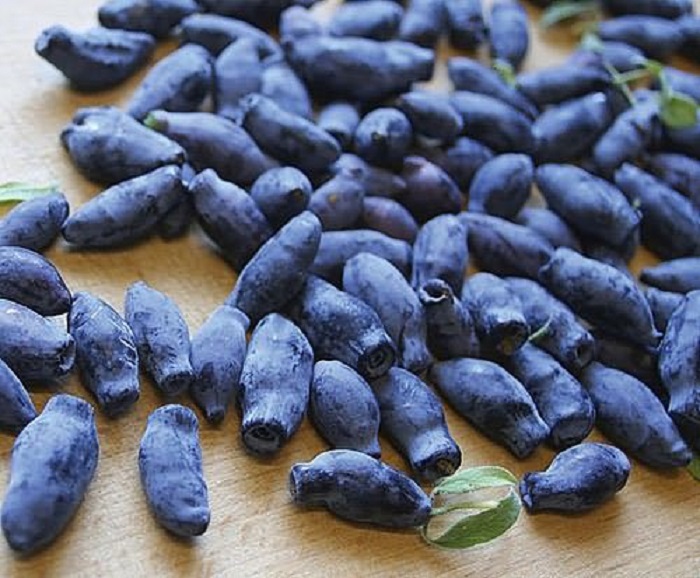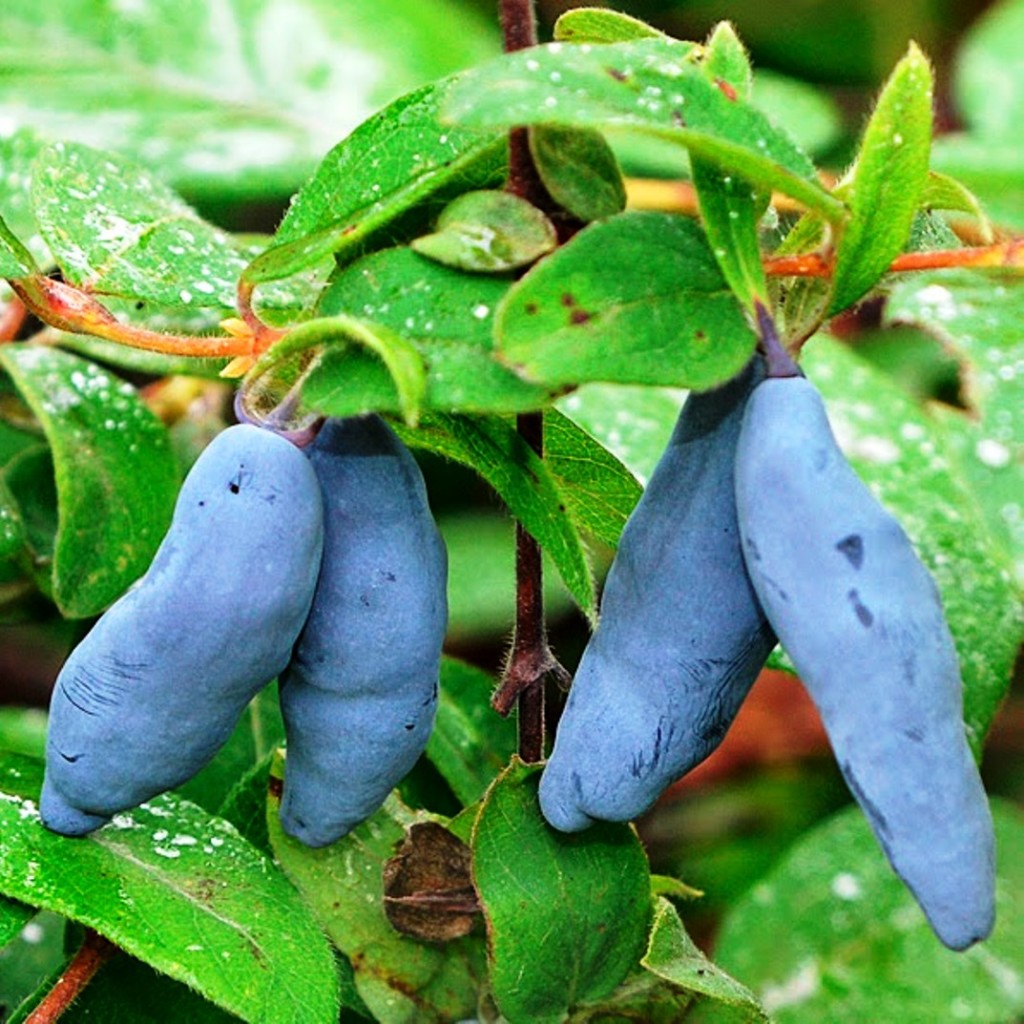Content:
Honeysuckle is a unique shrub that not only decorates modern areas, but also has a large supply of nutrients. There are a lot of varieties of a beautiful plant, one of the brightest representatives of this plant is Volkhov's honeysuckle.
A bit of history
This plant belongs to the product of the Leningrad selection. In Soviet times, the variety was developed by the agricultural technicians of the Pavlovsk experimental plant growing station of the V.I. Vavilov, which is located in St. Petersburg. The seeds of a variety of plants of the Pavlovsky species became the basis. The plant got into the register of achievements of selectors in 1999.
The honeysuckle plant belongs to the shrub family and grows exclusively in the northern part of the globe, where there is a temperate type of climate or continental. In East Asia and the Himalayas, especially on the Pacific coast, up to 150 plant species can be found.
Description of the plant
Volkhov's honeysuckle is considered to be a self-fertile plant species, therefore, when planning plantings, it is important to alternate it with the types of bushes Amphora, Pavlovsky, Lazurnaya and others to obtain a crop and pollination. Bumblebees and other flying insects act as pollinators.
On a note. An interesting fact is that bees will not participate in pollination of plants.
The main feature of this variety is its increased resistance to frost. The plant can withstand up to 40 degrees of frost without additional shelter.
The description of the Volkhov honeysuckle variety will not be complete without the main characteristics:
- the life span of a plant is from 20 to 25 years;
- the bush is distinguished by a large abundance of leaves, an oval crown;
- plant height reaches 1.5-2 m;
- vigorously growing leaves, broadly oval, dark green color;
- young shoots are quite thick with a slight slightly noticeable edge;
- the fruits are edible berries, they have a slightly bumpy surface, there is a pointed tip, are painted in a bluish, slightly bluish color;
- the weight of the berry can reach a gram, the diameter is 2.2 cm, and the length is 1.2 cm;
- the berries have dense juicy flesh with a thin skin, the taste has a strong sweet and sour aroma;
- the bush belongs to plants of medium ripeness, the fruits ripen somewhere around June 10-17, and in some northern regions 5-7 days later, for example, in Moscow or the Moscow region.
The fruits of the plant are very useful. The berries contain a lot of vitamin C (56.3 mg / 100g.), Various organic acids, sugar. Magnesium is present, it is much more than in other similar berries.
If we consider the fruits in terms of chemical composition, then they:
- the amount of acids - 1.9%;
- sugars - 8.5%.
Volkhov's honeysuckle is a plant whose fruits can be consumed not only raw. Housewives cook jams, compotes, jellies, juices, jam and more for future use. The plant has a fairly high yield. With proper care, up to 2.5 kg of berries can be harvested from one bush.
Interesting fact. Volkhov's honeysuckle is often used for industrial cultivation. Such shrubs can be harvested mechanically. The berries are well stored and transported.
Many site owners very often use this variety of honeysuckle in garden design, creating beautiful landscapes with the participation of this shrub.
Growing features
The most acceptable period for planting a plant is considered the end of summer - the beginning of autumn. Transplant is carried out until mid-September, since it is during this period that the plant stops growing rapidly, future apical buds are laid. They become the basis of the next year's harvest. But it should be understood that the seedlings after planting will give the first harvest only in the third year.
Site preparation for growing
Honeysuckle bushes prefer an area with good lighting, the lack of the required amount of light affects the taste of the berries later. To protect the plant from wind and drafts, experienced gardeners recommend placing bushes along fences and fences. For transplanting, both young seedlings at the age of 3 years and older plants (six years old) are suitable.
The soil before planting requires preparation:
- the area where the planting will be carried out is thoroughly watered;
- a hole is dug for a plant;
- at the bottom of such a hole, a composition consisting of 70 grams is laid. potassium salt and 15 gr. superphosphate;
- if it is planned to plant six-year-old seedlings, then the amount of fertilizer should be doubled;
- if the soil is of a heavy nature, then peat, sawdust are additionally placed on the bottom of the hole; instead of sawdust, you can take coarse-grain garlic;
- if water stagnation periodically occurs on the site, then good drainage should be done.
During installation, the roots of the seedlings are carefully distributed over the surface of the earth and covered with soil. After planting, the plant is watered again. The near-stem section of the soil is mulched in order to retain moisture near the roots of the plant. But still, professionals recommend using seedlings that have been specially grown in boxes for planting. Their most important advantage is that they easily move to a new location without damaging the root system.
Care during growth
In general, the Volkhov honeysuckle variety is a plant that does not require complex care. The area near the trunk should be loosened regularly and weeds removed.
It's worth remembering! Such procedures must be carried out very carefully, since the roots are not located too deep, and any damage to them will affect the growth of the plant.
Watering is needed in moderation, depending on the drying of the soil. Thorough watering is necessary only during periods of drought and long absence of rain. Abundant watering is also important during fruit growth. It should be controlled so that moisture stagnation does not form - the roots quickly rot, which, accordingly, leads to death.
Interesting. If, during formation, the bushes are provided with abundant watering, then the harvest will turn out to be sweet and very juicy. In general, as practice shows, even under not very favorable conditions, the berries of this variety do not taste bitter.
Planting honeysuckle requires regular feeding:
- after the snow melts, it is necessary to fertilize the bushes with fertilizer, in which nitrogen components prevail;
- after the appearance of the first foliage, organic-based compositions are introduced;
- during the period of active flowering and the beginning of the formation of berries, watering with ash is required;
- top dressing with potash and phosphorus compounds is performed in the autumn.
To increase yields, you should regularly prune the bushes, removing old, damaged and dried branches. Pruning is carried out once every 2-3 years. It is not worth pruning the plant more often, as it overgrows for a long time.
It is important to know! The first time the honeysuckle should be pruned when the bush reaches 2-3 years. For a young plant, this procedure can be very stressful.
An old plant can be gradually rejuvenated by removing old branches.You cannot remove many branches at a time, this can lead to the death of the entire bush. You should not remove the tops of the plant, because it is on them that the bulk of the flower buds are located, which are responsible for the harvest.
Reproduction can be carried out by cuttings or dividing an adult bush.
Preparation for wintering
The Volkhov's honeysuckle variety is the most resistant to severe winter conditions. Winters with temperatures up to -40 degrees are not terrible for bushes, and spring young shoots and flowers withstand late frosts down to -8. But in too cold winters, mulching is necessary so that the plant does not die by the spring. If the winter is snowy, then the ground around the bush should be covered with additional snow. This method is acceptable for healthy adult plants. For the first two years, while the bushes are not yet strong enough, additional cover should be performed to maintain plantings. Using humus, old leaves, spruce branches, cover the near-trunk part of the soil. The layer should be at least 15 cm. Mulching is carried out when the cold weather is + 3 ... -3 degrees.
Plant pests and diseases
A feature of Volkhov's honeysuckle is its good resistance to most garden diseases and pests. Most often, problems arise with young bushes - they can be attacked by aphids or honeysuckle. The main reason for the invasion is non-observance of agricultural rules. Also, infection can often come from neighbors. Pest control is carried out using special insecticides, as well as mixtures prepared according to folk recipes.
If the defeat occurred with a goldfish, then the branch is cut as low as possible, and then burned. After harvesting, it is better to treat the bushes with special insecticides, which will be a preventive measure to protect the plant from damage by these insects.
Advantages and disadvantages
Volkhov's honeysuckle belongs to common shrubs, since with a large number of advantages it has a small number of disadvantages.
Among the most important advantages are:
- frost resistance;
- high productivity;
- ripe berries do not crumble for a long time, which makes it possible to pick them less often, but in large volumes;
- honeysuckle Volkhov's variety is unpretentious when leaving;
- the fruits have a pleasant aftertaste and are used for fresh food, and also proved to be excellent when harvested for the winter;
- the ability to use when creating garden design.
The main disadvantages of the plant should be noted:
- small fruits;
- late fruiting (the first fruits appear 3-4 years after planting).
- young bushes can be affected by diseases and pests.
Volkhov's honeysuckle is one of the most common varieties of bushes that bears fruit perfectly even in a harsh winter climate. Frost is not an obstacle for them to please their owners with a tasty and healthy harvest.








